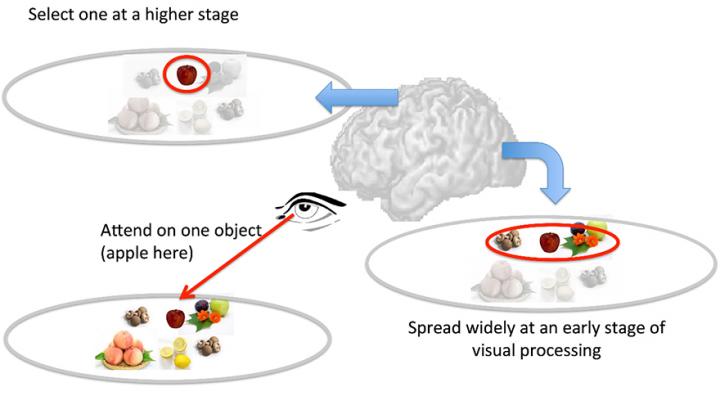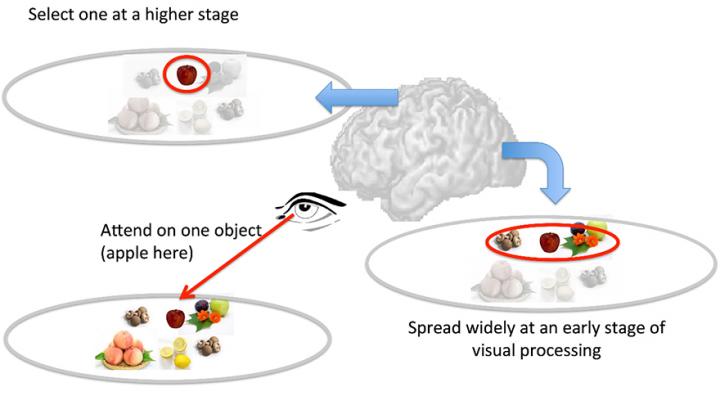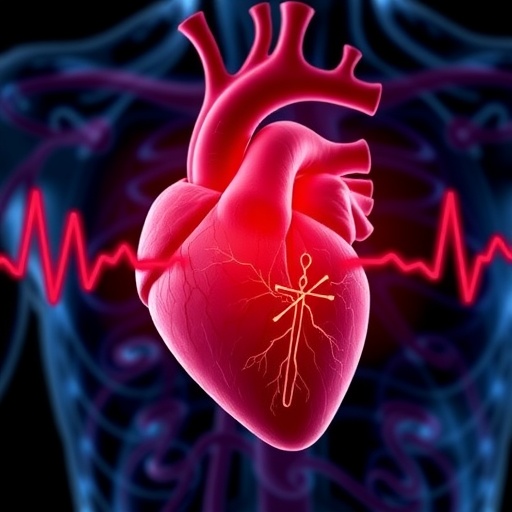
Credit: Satoshi Shioiri
Researchers at Tohoku University have revealed multiple functions of visual attention, the process of selecting important information from retinal images.
Studies of visual attention discovered an interesting inconsistency in spatial property. Specifically, some studies reported broad spatial spreads around attended locations, while others reported a selection of information at the attention focus.
For example – according to one study, when a person looks for a friend in a crowd, visual attention makes not only the friend, but also the people standing around the friend more visible. Another study claims that attention tends to focus on the friend's face, ignoring everyone else.
According to the research group led by Professor Satoshi Shioiri of the Research Institute of Electrical Communication, these discrepancies can be attributed to the different stages of the attention process. Their brain wave measurements revealed that a wide area around the attention focus is facilitated by attention at early visual processing, and that information at the attended location is extracted selectively at later processing. Information adjacent to the attention focus seems to be facilitated and suppressed simultaneously. So the inconsistency among previous studies can be explained by considering the effects of different attentional processes.
The research group thus proposes a model of spatial attention that has two stages with different functions. The attention model proposed could predict different attention effects for different visual processes.
This would be useful particularly for complex tasks such as driving, where it is important to notice not just pedestrians but also other elements on the road. Precise estimation of attention helps people to understand potential dangers in attention-demanding conditions.
This study was published in Scientific Reports on October 19, 2016.
###
Media Contact
Satoshi Shioiri
[email protected]
@TohokuUniPR
http://www.tohoku.ac.jp/en/
############
Story Source: Materials provided by Scienmag





